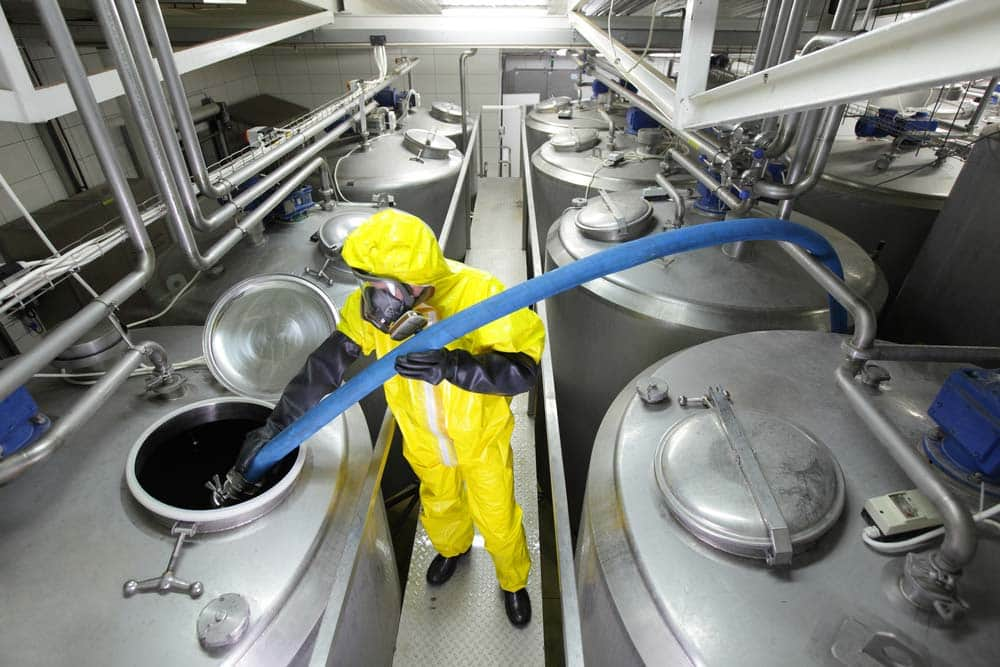OSHA HAZWOPER Exposure Key Definitions
Once the presence and concentrations of specific chemicals or classes of chemicals have been established, the hazards associated with these chemicals must be determined. This is done by referring to standard reference sources for data and guidelines on permissible levels of exposure, flammability, etc.
Threshold Limit Value (TLV)®
TLVs can be used as a guideline for determining the appropriate level of worker protection. These values have been derived for many substances and can be found in Threshold Limit Values for Chemical Substances and Physical Agents, which is published annually by the American Conference of Governmental Industrial Hygienists (ACGIH). The ACGIH defines three categories of TLVs: time-eighted average (TWA); short-term exposure limit (STEL); and ceiling (C). All three categories may be useful in selecting levels of protection at a hazardous waste site.
Permissible Exposure Limit (PEL)
Permissible exposure limits are enforceable standards promulgated by OSHA. In many cases they are derived from TLVs published in 1968. The PEL for a substance is the 8-hour timeweighted average or ceiling concentration above which workers may not be exposed. Although Sample jars are labeled prior to sampling as part of site documentation procedures. personal protective equipment may not be required for exposures below the PEL, its use may be advisable where there is a potential for overexposure.
Recommended Exposure Limit (REL)
A NIOSH recommended exposure limit (REL) is the workplace exposure concentration recommended by NIOSH for promulgation by OSHA as a PEL, but is not enforceable as is the OSHA PEL. In some cases, NIOSH has described time-weighted average concentrations in terms of 10-hour, rather than 8-hour, averages.

IDLH Concentrations
IDLH exposure concentrations have been established by the NIOSH/OSHA Standards Completion Program (SCP) as a guideline for selecting respirators for some chemicals. The definition of IDLH varies depending on the source. For example, the Mine Safety and Health Administration Standard (30 CFR Part 11.3(t)) defines IDLH conditions as those that pose an immediate threat to life or health or that pose an immediate threat of severe exposure to contaminants such as radioactive materials that are likely to have adverse cumulative or delayed effects on health. The NIOSH Pocket Guide to Chemical Hazards defines IDLH concentration as the "... maximum level from which one could escape within 30 minutes without any escapeimpairing symptoms or any irreversible health effects....." The American National Standards Institute, Inc. (ANSI) defines IDLH as "….any atmosphere that poses an immediate hazard to life or produces immediate irreversible debilitating effects on health ...". Regardless of their exact definition, all IDLH values indicate those concentrations of toxic substances from which escape is possible without irreversible harm should a worker's respiratory protective equipment fail. At hazardous waste sites, IDLH concentrations should be assumed to represent concentrations above which only workers wearing respirators that provide the maximum protection (i.e., a positive-pressure, full-facepiece, self-contained breathing apparatus [SCBA] or a combination positive-pressure, full-facepiece, supplied-air respirator with positive-pressure SCBA are permitted. Specific IDLH values for many substances can be found in the NIOSH Pocket Guide to Chemical Hazards.
Potential Skin Absorption and Irritation
Information on skin absorption is provided in the ACGIH publication, Threshold Limit Values for Chemical Substances and Physical Agents and in OSHA standard 29 CFR Part 1910.1000 and other standard references. These documents identify substances that can be readily absorbed through the skin, mucous membranes, and/or eyes by either airborne exposure or direct contact with a liquid. This information, like most available information on skin absorption is qualitative. It indicates whether, but not to what extent, a substance may pose a dermal hazard. Thus decisions made concerning skin hazards are necessarily judgmental. In addition, many chemicals, although not absorbed through the skin, may cause skin irritation at the point of contact. Signs of skin irritation range from redness, swelling, or itching to burns that destroy skin tissue. Standard references can be used to determine whether a chemical may act as an irritant.
Potential Eye Irritation
Quantitative data on eye irritation are not always available. Where a review of the literature indicates that a substance causes eye irritation, but no threshold is specified, have a competent health professional evaluate the data to determine the level of personal protection needed for onsite workers.
Explosion and Flammability Ranges
Studies show the lower explosive limit (LEL) or lower flammable limit (LFL) of a substance is the minimum concentration of gas or vapor in air below which the substance will not burn when exposed to a source of ignition. This concentration is usually expressed in percent by volume. Below this concentration, the mixture is too "lean" to burn or explode. The upper explosive limit (UEL) or upper flammable limit (UFL) of a substance is the maximum concentration of gas or vapor above which the substance will not burn when exposed to a source of ignition. Above this concentration, the mixture is too "rich" to burn or explode. The flammable range is the range of concentrations between the LFL and UFL where the gas-air mixture will support combustion.
The flashpoint of a substance is the minimum temperature at which it gives off sufficient vapor to form an ignitable mixture with the air just above the surface of the substance. Ignition of a substance at the flashpoint is not continuous. The ignition temperature or autoignition temperature is the minimum temperature required to initiate or cause self-sustained combustion without an ignition source. When evaluating the fire or explosion potential at a hazardous waste site, all equipment used should be intrinsically safe or explosion-proof. Where flammable or explosive atmospheres are detected, ventilation may dilute the mixture to below the LEL/LFL. However, ventilation is generally not recommended if concentrations exceed the UFL/UEL, since the mixture will pass through the flammable/explosive range as it is diluted. Note that combustible gas indicator readings may not be accurate when oxygen concentrations are less than 19.5 percent.

